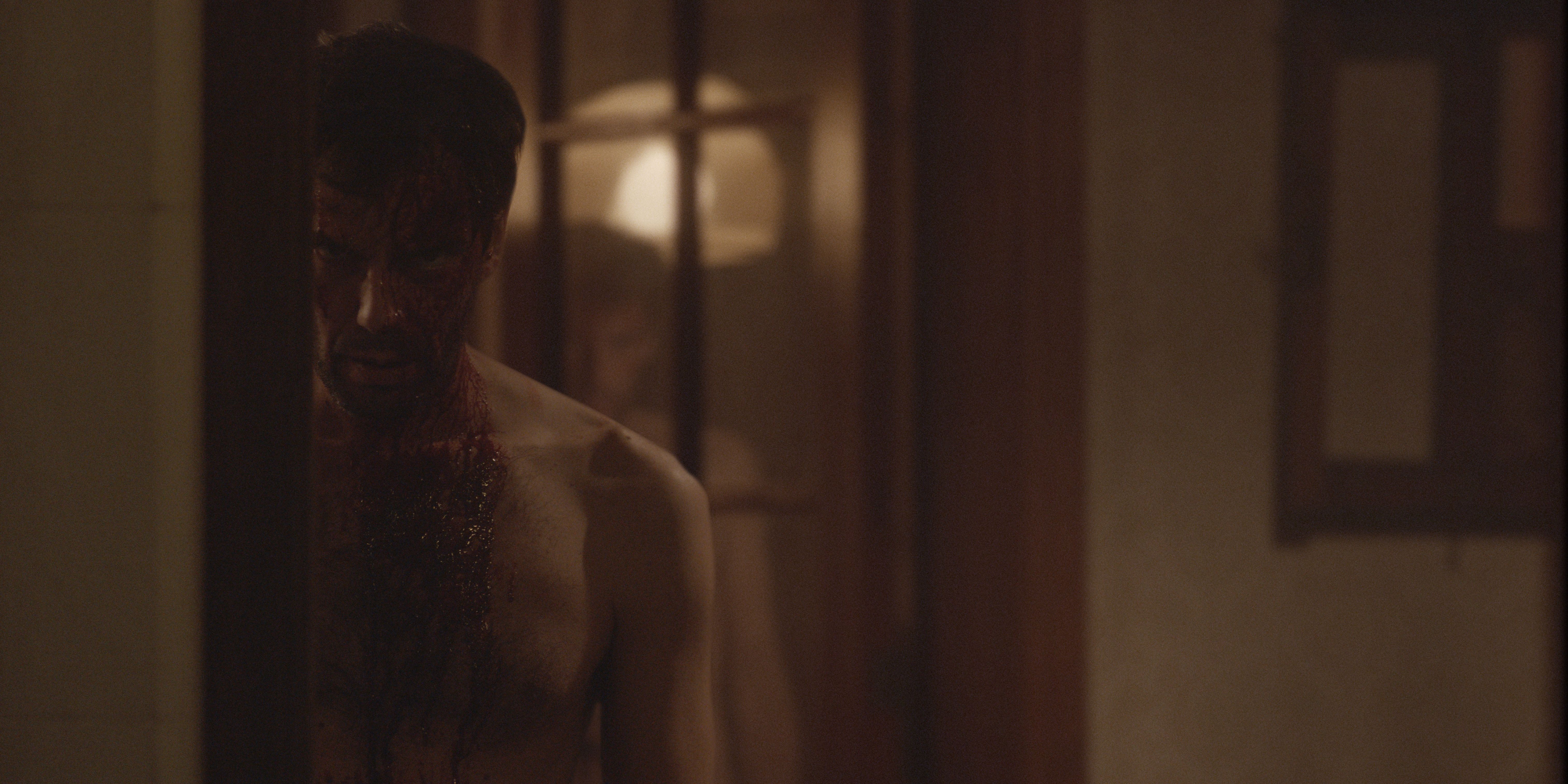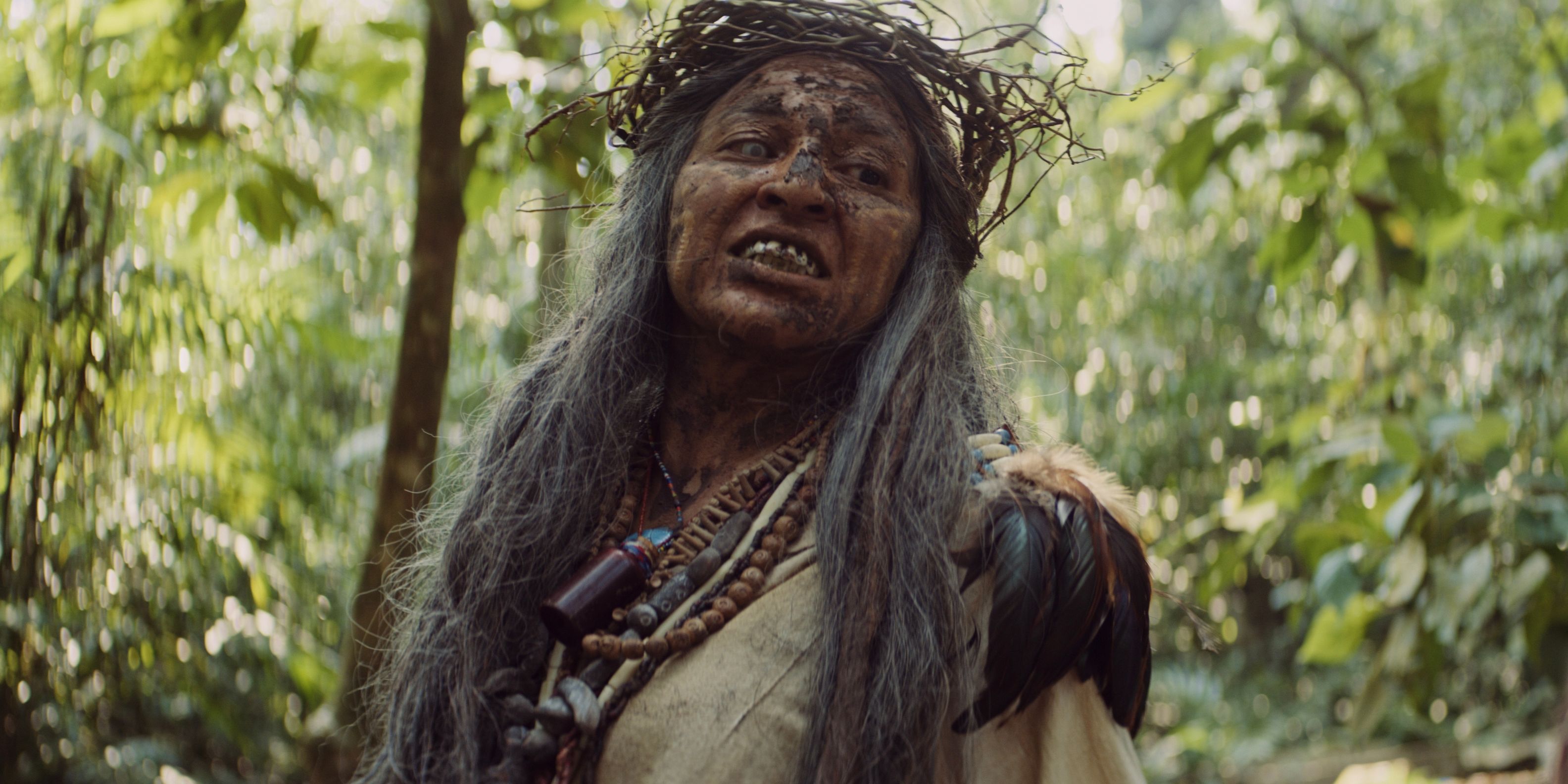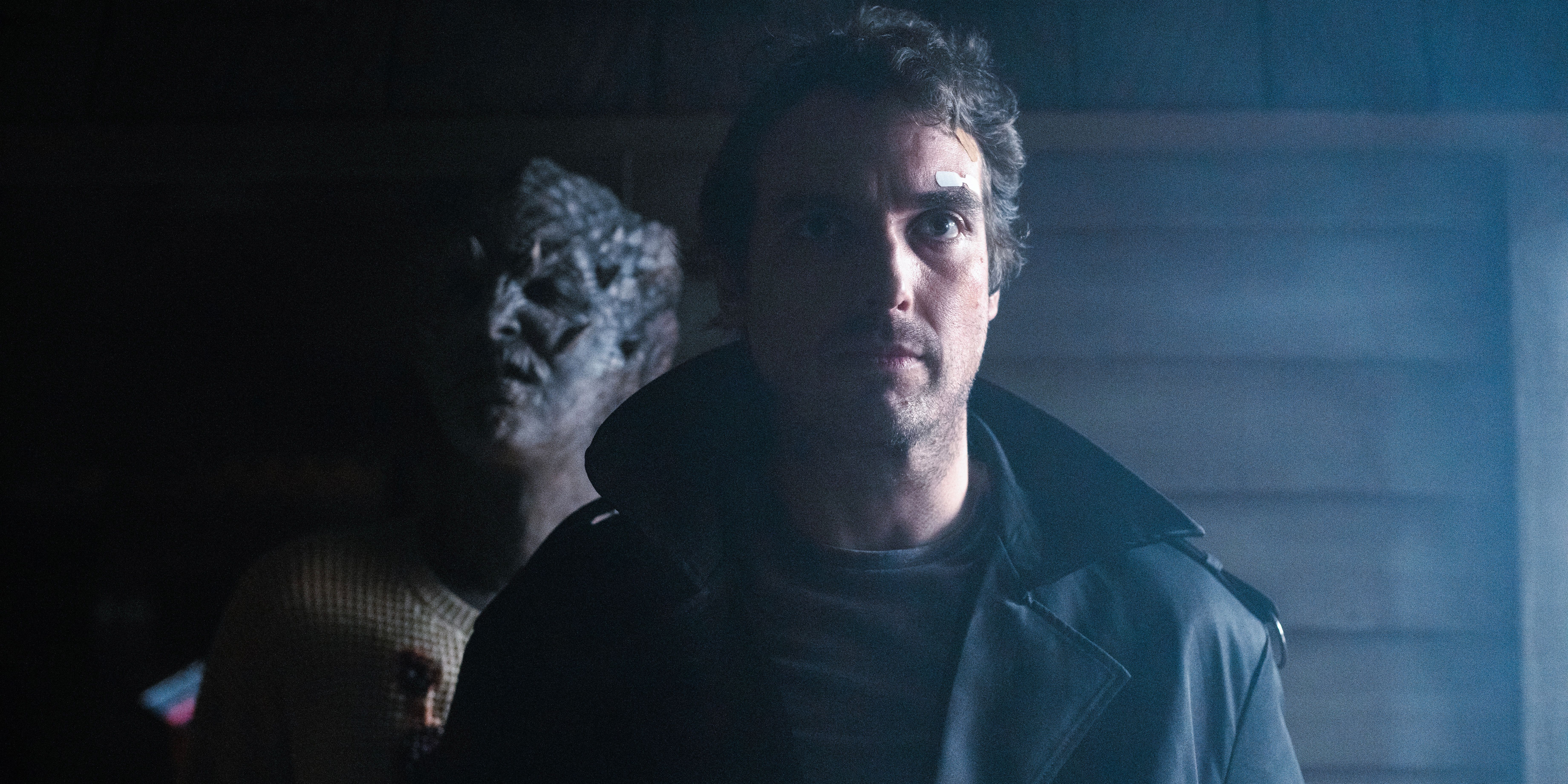Dropping right before the start of Hispanic Heritage Month, Satanic Hispanics will be available to see in theaters on Thursday, September 14th. The horror anthology follows The Traveler, who is the only living survivor after the police raid a house in El Paso. Brought to the station for question, the mysterious man tells multiple harrowing stories about the enigmas he has witnessed throughout his life.
In addition to Demián Rugna and Eduardo Sánchez, Mike Mendez, Alejandro Brugués, and Gigi Saul Guerrero serve as directors for the film. Mendez has worked on similarly spooky projects such as Tales of Halloween and The Gravedancers. Meanwhile, Brugués is known for Juan of the Dead, with Saul Guerrero’s most recent feature being Trap House.
Directors Mike Mendez, Alejandro Brugués, and Gigi Saul Guerrero chat exclusively with Screen Rant about bringing diverse Latino representation to Satanic Hispanics and collaborating with filmmakers from across the continent. Note: This piece was written during the 2023 WGA and SAG-AFTRA strikes, and the film covered here would not exist without the labor of the writers and actors in both unions.
Mike Mendez, Alejandro Brugués & Gigi Saul Guerrero Talk Satanic Hispanics

Screen Rant: There are a lot of different scripts and a lot of different genres to get involved in, so what made each of you want to be a part of this horror anthology?
Gigi Saul Guerrero: When I got approached, the first thing that stood out to me, I love sharing this, was the title. I knew nothing. I just got this random text from Mike that said, “Satanic Hispanics—what do you think?” It just sounded so awesome, but what was super intriguing about it was the set idea of the wraparound, about The Traveler bringing in all of these different stories of Latin America. I felt that this was such a cool and different and unique idea that filmmakers like myself, who have not had so many opportunities to be as authentic, that this was the project to do it. This was the project with no borders. It was such a blessing as well. I couldn’t help but say, “F*ck, yeah!”
Alejandro Brugués: When Mike and I first talked about it, it was the appeal of doing an all-Latino horror anthology. We have talked a lot about this, but Latinos—we have largely been shut out from horror. None of the horror movies we grew up with had any Latinos. Maybe you can point someone out here and there, but we weren’t seeing ourselves in those movies. It’s getting a tiny little bit better now, but we don’t see ourselves reflected in horror, and yet, Latinos are the largest movie-going audience for horror.
What we wanted to do was do an anthology where we could tell a lot of stories by ourselves and take back our narrative, and show our diversity behind and in front of the camera. Other than having fun with friends, and getting to do something that you’re doing for yourself and having fun, I think there was this bigger purpose behind it that was always very inspiring.
Mike Mendez: We were also just looking for a chance for representation, both in front of the camera and behind the camera. I thought one of the things that made us unique was that we got to explore different kinds of Latino stories. It wasn’t border stories, it wasn’t drug cartel stories—we can tell myths about monsters and creatures that, perhaps, people don’t know about South America or Mexico or Cuba. We could tell a different unique point of view of what a Latin story is. And so that was really exciting. And then of course, obviously, to work with very talented filmmakers you admire is always a joy.
There are several different segments that make up this anthology. Did you collaborate and direct together, or split them up?
Mike Mendez: It’s a split-up thing. Basically, myself and Alejandro kind of got the ball rolling as far as the idea of like, “Hey, we want to do an all-Latino anthology.” And then we set the parameters of, “Okay, let’s make it about myths and legends of Latin America.” From there, we approached filmmakers who were our friends and whose work we admired and felt would be a good fit for the team. So Alejandro started by reaching out to Ed Sánchez, and I reached out to Gigi, and we went from there. It was important to get different filmmakers from all of Latin America. We have Gigi from Mexico, Alejandro from Cuba, my heritage friends El Salvador. Then we also wanted South America, so Demián Rugna from Argentina seemed like a natural fit.
Alejandro Brugués: We wanted to show how diverse Latinos are because, usually when you mentioned Latinos, people think of Mexicans. That’s great, but we’re way more than only Mexico. We’re a whole continent, we’re very different, and we have a lot of things in common too, and we wanted to show that. We wanted to bring filmmakers that would show the whole Latino experience. We have first-generation Americans like Mike, we have some that immigrated here or to Canada like Gigi and Eduardo and myself. In the case of Eduardo, he came to the US when he was six years old. I came here ten years ago. But we also wanted to show stuff from filmmakers who also lived in Latin America. That’s why we looked for Demián. We love him. We love the film. What a great filmmaker he is. That brought the diversity that we wanted to show in the film.

There are multiple genres mixed in here. There are humorous aspects as well as horror. Did you want each story to be tonally different?
Mike Mendez: We wanted the filmmaker to express their voice and do whatever they wanted to do because that is kind of the challenge. These are low-budget independent shorts. It’s not like, “Here’s a huge check to come do our film.” The appeal for any filmmaker to do this is strictly the autonomy to do your short and do whatever you want. We set certain parameters of it. It should be about Latin America, it should be about some sort of creature or things like that. But other than that, we truly, genuinely admire every filmmaker that’s a part of this, and we want to hear that filmmaker’s voice, and we want to see that filmmaker do their thing because we’re fans.
Alejandro Brugués: Also, I think a part of the different tones and different genres also speak about the diversity that I mentioned earlier. You can see in the different segments how it reflects our background. Gigi, from Mexico, does the bloodiest one because they have a special relationship with violence. Eduardo and I did something more humorous because we’re Cubans and that’s the way that we have found to deal with everything that has happened in Cuba for the last six decades. I think the tone of each story also reflects who we are as filmmakers or nationalities.
Gigi Saul Guerrero: Something that’s really fun is that I think all of us also challenged ourselves to do something different from our usual, and if not different, go even harder with some of the choices—to be a lot more bold and more unapologetic with this anthology too. It’s been really cool to see everybody’s work. We all know each other’s work, but it was so neat to see what it means to have that freedom to just create because we don’t get that enough. That’s where the true authentic stories come from.
When it came to the length of each of these segments, did you run into the challenge of, “We need to add something to this chapter, but we don’t want to take that time from another story?” Were there any struggles that came with giving them all proper attention in the time that you had?
Mike Mendez: Not really, because we tried to set certain parameters right at the top. So it’s like, “Okay, these are the things that, hopefully, we’re looking for, down to shooting in the 2.35:1 aspect ratio, so that they’re, hopefully, all uniform. Make it about something that is a Latin theme, make it, hopefully, with a creature. Also, just us as filmmakers, we have kind of a connection as far as that we admire each other’s work because we kind of do, I don’t want to say similar stuff, but we were all working in the same voice.
We all like Quentin Tarantino and Robert Rodriguez and John Carpenter and Guillermo del Toro. We have a lot of the same influences. I think that kind of helps form it. Like I said before, filmmaker autonomy is super important to us. It was a matter of trusting your filmmaker and trusting that they were going to do a good job. But again, they were good people that are good filmmakers, so thankfully, that all came through.
What about the effects you used? There were a lot of things that looked practical, but I believe you had a VFX supervisor as well.
Mike Mendez: I’ll let everyone else speak about their segments individually, but I think that’s one of the things that brings us as a collective. We love horror, and we love the same type of stuff. We get that a lot about the practical effects. It was never a conversation. It was never, “Hey, do some practical effects. Don’t do the CG thing.” I think all of us intuitively know that practical effects are better. So that’s kind of why we did them.
Gigi Saul Guerrero: I just think practical looks so much cooler. I think you feel the texture so much more. I don’t have anything against CG and VFX. I think it’s awesome. But I think in genre, when you go back to old-school filmmaking and horror, there’s such a grind to things that you can touch and feel. With budgets like we had, when you’re limited, it really challenges you to be super smart as to what is worth it. What is worth putting that practical effect and that effort into?
Something I love with all of us that come from the indie world, is that we have to be super creative on what’s going to be earned and what’s going to be satisfying for those one or two set piece that have that practical effect. In my case, I left it to towards the end of my segment when the shape-shifting begins of these characters of the folklore. Also, I always ask myself, “What’s going to make my mom very uncomfortable?” And that’s the answer of what to put the practical effects on. If I can answer that, that’s definitely what it’s going to be. [Laughs]
About Satanic Hispanics

When police raid a house in El Paso, they find it full of dead Latinos, and only one survivor. He’s known as The Traveler, and when they take him to the station for questioning he tells them those lands are full of magic and talks about the horrors he’s encountered in his long time on this earth, about portals to other worlds, mythical creatures, demons, and the undead. Stories about Latin American legends.
Satanic Hispanics will be available in theaters on September 14.




